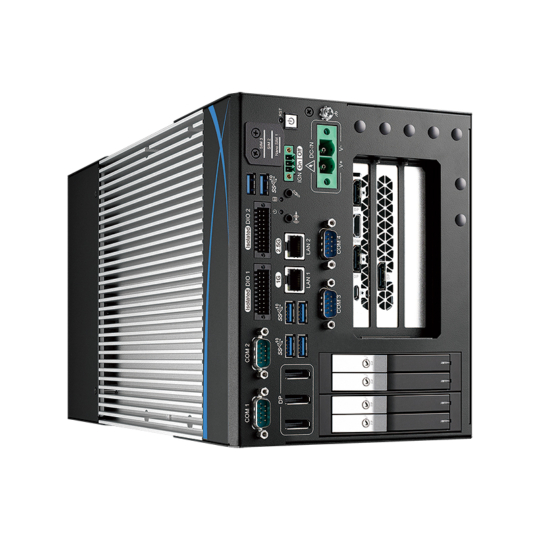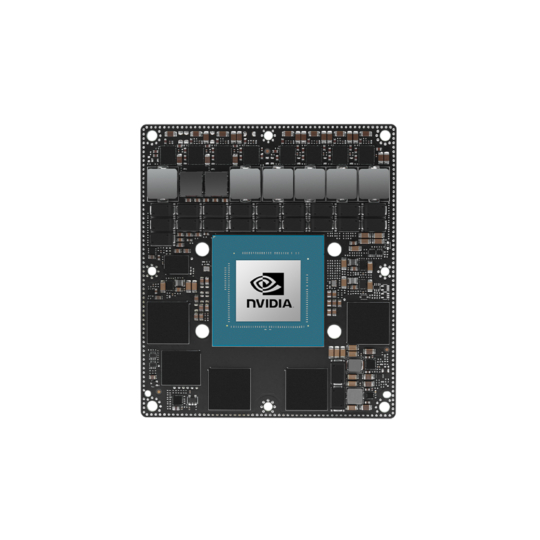AI Edge Computing: Deploying Rugged Edge Computers for AIoT
Artificial Intelligence of Things (AIoT) is quickly becoming a reality. The demand for AIoT applications to utilize large data sets is putting strain and high costs on cloud computer networks, which can be relieved by putting increase processing performance in proximity with a rugged edge computer and AIoT hardware such as an embedded GPU or industrial IoT device. With the introduction and rapid adoption rate for AIoT technology, edge computing has quickly transformed from instrumentation and simple energy efficient Industrial Internet of Things IIoT Gateways to much more powerful computational devices with integrated GPUs. Pairing HPC (High Performance Computing) at the edge with lower latency technology such as 5G allows for high accuracy AI modelling with reduced overheads thanks to the systems being less dependent on cloud computing and services.
Edge AI Computing Solutions for Embedded and Industrial Applications
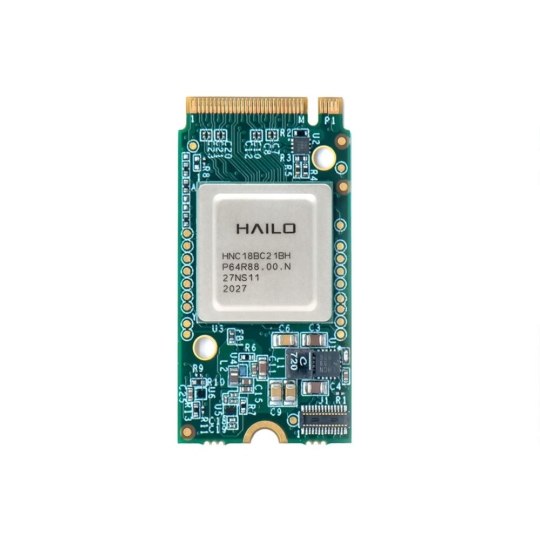
Hailo AI Accelerator Solutions
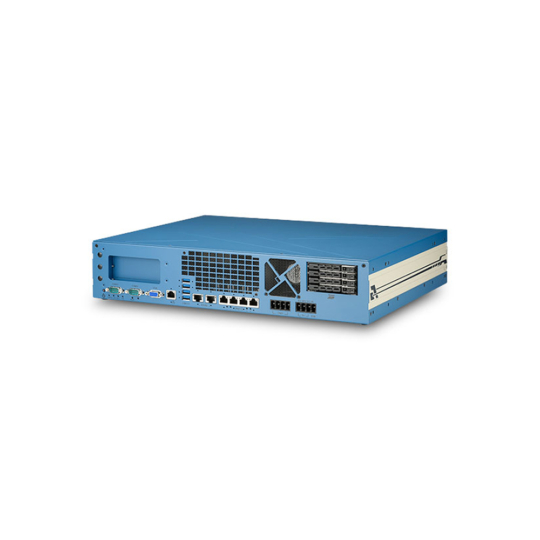
Deep Learning GPU Servers
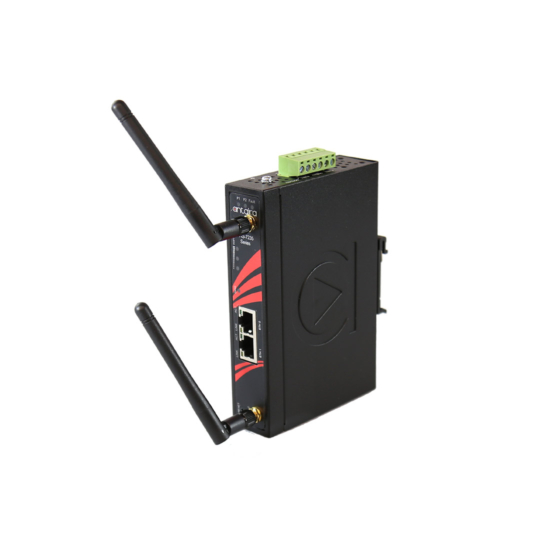
Rugged IoT Devices
Configuring Rugged Edge Computers With AI Accelerators
Edge AI Computers are showing its potential as a game-changer for many industrial applications as we know it, enabling new ways of working that are not only more powerful but also more efficient than ever before. Adopting Edge AI Computers into process-intensive applications involving advanced technologies like AI (Artificial Intelligence), ML (Machine Learning), Deep Learning, and IIoT (Industrial Internet of Things), stems rapid development in the market for chip-level solutions, boards (SOMs and SBCs) and embedded Box PC solutions.
AI Edge Computers and AI Edge Servers aren’t always installed in forgiving environments or climate-controlled server rooms. In most use cases and to be data centric, they are installed within proximity of the data source putting them in the exact conditions to the rest of your operations. This can put your hardware in harsh environments subject to dust or water ingress, variable temperature swings, interference from EMI, or having to endure repeat shock and vibration. In these use cases, deploying industrial and ruggedized hardware at the edge is you only option to avoid system failures.
Our rugged edge computers for AIoT are designed and configured for unique use cases. Configured with either a GPU or choice AI Accelerator on board, our edge AI systems are available in multiple form factors from board level solutions to small form factor Box PC solutions, to traditional 19″ rackmount systems. These systems can be preconfigured with your choice of OS and edge AI software before dispatch.
Industrial Applications Using Edge AI Computers
Edge AI use cases are found across a wide range of industries for embedded and industrial applications. Below are a few industry examples of adopting AI models with a rugged edge computer.
In-Vehicle: Edge AI can provide moving vehicles with real-time data processing. Use cases for adopting rugged edge computers on vehicles includes ADAS (Advanced Driver Assist Systems), V2X vehicle-to-vehicle protocols for enhance connected ecosystems, intuitive infotainment, and adaptive & predictive maintenance. Use cases for in-vehicle computing not only applies to cars and can be utilized in other use cases such as autonomous unmanned systems and onboard trains. Our AI Railway Computers are deployed for track condition monitoring which helps monitor the health of railway lies and assists in the monitoring and reporting of overgrown vegetation could one day become a problem. These high-speed computers are designed to meet in vehicle UNECE Reg 10 E-mark and rolling stock EN 50155 standards for shock or vibration. Supporting wide ranging DC power input, these rugged edge servers ensure your data both accessible and safe whilst remaining actionable anywhere it is required.
Smart Manufacturing: Edge AI analytics help manufacturers to improve their inventory and compliance with regulations. By connecting sensors from devices on the field, a greater insight with more accurate data for maintenance protocols is achieved. In result, overhead costs are reduced while increasing safety standards in manufacturing plants across all industries.
Industrial IoT: Edge AI can be used for automating the assembly or food production line, and it’s also possible to visually inspect products using artificial intelligence algorithms instead of having human beings perform manual inspections for defect detection. This process can save both time and money whilst ensuring the highest levels of quality control. Learn how our Industrial GPU Computers command Edge AI Inference Systems for an automated food factory.
Maritime & Subsea: Among many applications for condition monitoring of the vessel, deploying industrial-grade computers at the edge can have many uses cases within the marine sector. Equipping high-resolution vision cameras onboard ships and subsea vehicles help record new-found exploration, model oceanic floor for safe passaging, and recognise nearby obstacles to be avoided. All newfound data can be processed and analysed before being sent back to the cloud for update which in turn would be update on other edge devices around the globe.
Healthcare (Patient Monitoring): When compared to traditional cloud-based systems, Edge AI applications in the healthcare (patient monitoring) sector provide several distinct advantages. Hospitals often struggle with storing and processing vast amounts of data from devices like glucose monitors or cardiac trackers and processing this data locally means only critical data relating to patient health gets stored, saving a mass amount of space. This condensed record of patient behaviour creates a simplified patient dashboard for full visibility. Learn how a telemedicine focused OEM utilizes AI for endoscopy with the latest Medical Edge PCs and customised video capture cards.
Advantages of Edge AI vs Cloud Computing AI
As businesses increasingly look to artificial intelligence (AI) to gain a competitive edge, they are turning to rugged edge AI computers that can provide the real-time processing and decision-making needed to support critical applications. Edge AI solutions offer many benefits over traditional cloud-based AI, including improved reliability, lower latency, and reduced data costs. By bringing AI processing closer to the data source, edge AI can provide faster and more accurate results, which is especially important for time-sensitive applications such as retail customer service or industrial process control. In addition, edge AI computers are often less expensive to operate than cloud computing AI, due to the lower data costs associated with transferring data to and from the cloud. As businesses continue to adopt AI technologies, edge AI is likely to play an increasingly important role in supporting critical applications.
Summary of Advantages for Edge AI Computers
Real-time Analytics with Reduced Latency and Higher Speeds: Real-time analytics is a major advantage of rugged edge computers. Edge AI brings high-performance computing capabilities to the edge, where sensors and IoT devices are located. Transfer of data back & forth from the cloud takes time. Edge AI reduces latency by processing data locally (at the device level). Processing this data locally in turn significantly improves processing speed as compared to cloud AI computing.
Reduced Bandwidth Requirement and Cost: AI processing on the edge makes a highly cost-efficient alternative to cloud solutions because only processed data required or valuable will go to cloud, reducing both bandwidth and cloud storage requirements.
Improved Data Security and Reliability: Higher levels of security combined with greater speed produce greater the reliability of Edge AI System. Local processing allows Edge AI Systems cutting-edge technology to reduces the risk of cyber security breaches. The majority of data processing occurs locally, which greatly limits exposure to hackers who may try accessing your sensitive information. TPM 2.0 hardware security standards by the Trusted Platform Group ensure that edge devices have secure data storage and encryption authentication to protect your personal information from hackers or other online threats.
Highly Scalable: The potential of scalability in rugged edge computing is quite tangible through the process offloading. Reducing overheads on cloud AI computing can save valuable resource for process intensive requirements.
Reduced Power Requirements: Edge AI helps save energy by processing data at the device level. System-on-Modules such as the NVIDIA Jetson platform can provide high levels of accelerated GPU computing in low power and fanless envelopes.
The Importance of 5G to Edge AIoT
Rugged edge computers and 5G improve network performance to support and deploy different real-time AI applications. An example of utilising 5G cellular technology onboard systems at the edge could be Smart City applications, whereby you’re deploying AI-based real-time video analytics edge AI software for intelligent surveillance and security.
The new 5G standard being deployed in high-growth mission-critical applications is driving urgent innovation around edge computers with 5G onboard. 5G is the next-generation cellular network which achieves higher throughput with faster network speeds, lower latency, enhanced provisioning, increased network slicing and overall lower power consumption. Learn more about adopting 5G at the Edge in IIoT and AIoT applications.
To understand the need for fast data transmission and local on-device computing, consider real-time packet delivery that requires an end-to-end delay of less than 10 ms. The minimum end-to-end delay for access to the cloud is greater than 80 ms, which is intolerable for many real-world applications. Fulfilling the sub-millisecond requirement of 5G applications, rugged AI edge computing also reduces energy consumption by around 30-40%. When compared to AI cloud computing, processing at the edge attributes up to 5x lesser energy consumption.
Want To Deploy Accelerated Computing At The Edge?
Tell us about your application and a member of our team will get right back to you.


